Text this colour links to Pages. Text this colour links to Family Trees. Place the mouse over images to see a larger image. Click on paintings to see the painter's Biography Page. Mouse over links for a preview. Move the mouse off the painting or link to close the popup.
All About History Books
The Chronicle of Geoffrey le Baker of Swinbroke. Baker was a secular clerk from Swinbroke, now Swinbrook, an Oxfordshire village two miles east of Burford. His Chronicle describes the events of the period 1303-1356: Gaveston, Bannockburn, Boroughbridge, the murder of King Edward II, the Scottish Wars, Sluys, Crécy, the Black Death, Winchelsea and Poitiers. To quote Herbert Bruce 'it possesses a vigorous and characteristic style, and its value for particular events between 1303 and 1356 has been recognised by its editor and by subsequent writers'. The book provides remarkable detail about the events it describes. Baker's text has been augmented with hundreds of notes, including extracts from other contemporary chronicles, such as the Annales Londonienses, Annales Paulini, Murimuth, Lanercost, Avesbury, Guisborough and Froissart to enrich the reader's understanding. The translation takes as its source the 'Chronicon Galfridi le Baker de Swynebroke' published in 1889, edited by Edward Maunde Thompson. Available at Amazon in eBook and Paperback.
Winterbourne Stoke West Barrow 10 G67 is in Winterbourne Stoke West Barrows.
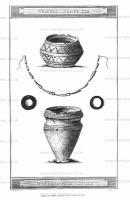
Colt Hoare 1812. No. 10 [Winterbourne Stoke West Barrow 10 G67 [Map]] was opened by Mr. Cunnington in the year 1804. In its form, it resembles the second class of Druid Barrows, is neatly ditched round, having the vallum without, and the tumulus rising gradually to its apex from the ditch. It contained an urn inverted over the burned bones, which had been wrapped up in a linen cloth, to protect them; and with the bones were found a small brass pin, employed probably for fastening the cloth, five rings of a dark brown colour, one of which was perforated for suspension, (Tumuli Plate XIII.) a small cone of the same materials perforated also for the same purpose, and several pully beads of glass, with one of jet, and another of amber.
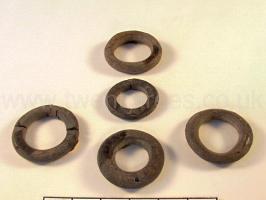
Wiltshire Museum. DZSWS:STHEAD.70. 5 rings of Kimmeridge shale (one of which was perforated for suspension) found with a wrapped primary cremation under an inverted urn in disc barrow Winterbourne Stoke G67 [Map], excavated by William Cunnington.
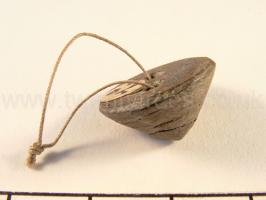
Wiltshire Museum. DZSWS:STHEAD.70a. 1 conical button of Kimmerage shale (v-bored on base) found with a wrapped primary cremation under an inverted urn in disc barrow Winterbourne Stoke G67 [Map], excavated by William Cunnington.
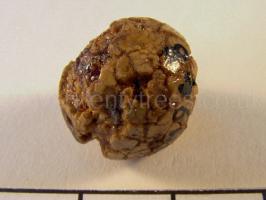
Wiltshire Museum. DZSWS:STHEAD.70c. 1 spherical amber bead found with a wrapped primary cremation under an inverted urn in disc barrow Winterbourne Stoke G67 [Map], excavated by William Cunnington.
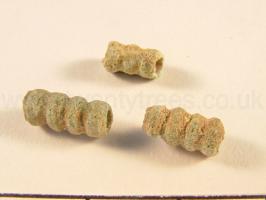
Wiltshire Museum. DZSWS:STHEAD.70e. 3 segmented faience beads (2 four segment & 1 three segment bead) found with a wrapped primary cremation under an inverted urn in disc barrow Winterbourne Stoke G67 [Map], excavated by William Cunnington.